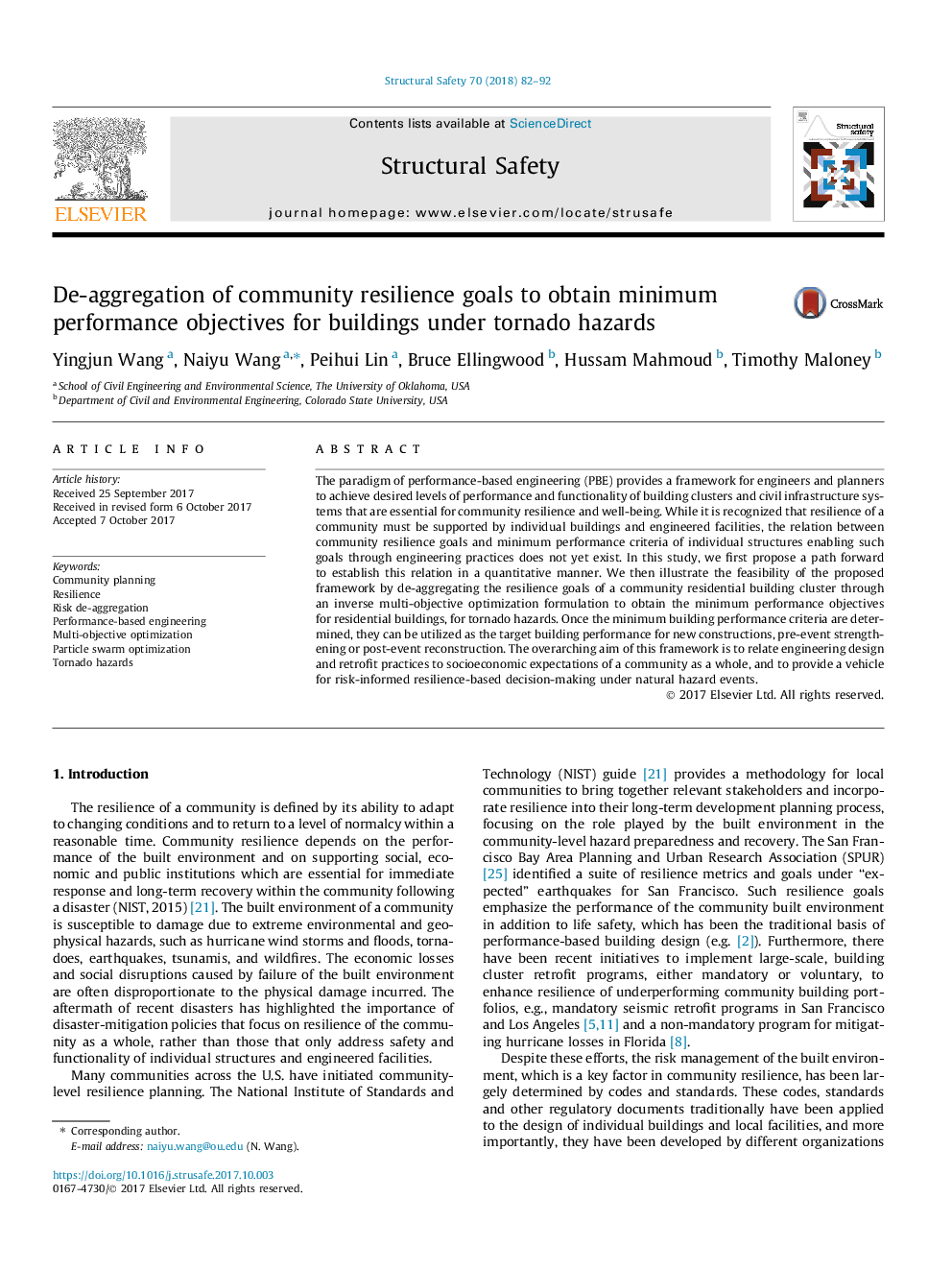| Article ID | Journal | Published Year | Pages | File Type |
|---|---|---|---|---|
| 6774113 | Structural Safety | 2018 | 11 Pages |
Abstract
The paradigm of performance-based engineering (PBE) provides a framework for engineers and planners to achieve desired levels of performance and functionality of building clusters and civil infrastructure systems that are essential for community resilience and well-being. While it is recognized that resilience of a community must be supported by individual buildings and engineered facilities, the relation between community resilience goals and minimum performance criteria of individual structures enabling such goals through engineering practices does not yet exist. In this study, we first propose a path forward to establish this relation in a quantitative manner. We then illustrate the feasibility of the proposed framework by de-aggregating the resilience goals of a community residential building cluster through an inverse multi-objective optimization formulation to obtain the minimum performance objectives for residential buildings, for tornado hazards. Once the minimum building performance criteria are determined, they can be utilized as the target building performance for new constructions, pre-event strengthening or post-event reconstruction. The overarching aim of this framework is to relate engineering design and retrofit practices to socioeconomic expectations of a community as a whole, and to provide a vehicle for risk-informed resilience-based decision-making under natural hazard events.
Keywords
Related Topics
Physical Sciences and Engineering
Engineering
Civil and Structural Engineering
Authors
Yingjun Wang, Naiyu Wang, Peihui Lin, Bruce Ellingwood, Hussam Mahmoud, Timothy Maloney,
